The Walled Garden:
The Order Beds
The order beds contain plants which have been arranged into two main flowering plant groups – monocotyledons and dicotyledons – to display their evolutionary relationships. They provide an important resource for teaching plant taxonomy.
Processes of Evolution
Sonchus is a genus in the daisy family (Astercaeae) of some 62 species. There are three native Irish species: the perennial S. arvensis, and two annuals S. oleraceus and S. asper. S. arvensis. An impressive European species, S. palustris, whose flowering stem reach heights of three meters, is grown at the garden and flowers in early summer. Some really spectacular Sonchus species occur in the Macaronesian region (Canary Islands, Madeira, the Azores and Cape Verde archipelagos). There, Sonchus has evolved into a spectacular variety of growth forms; remarkably, many have woody stems and grow as shrubs – an unusual feature in a genus that is otherwise herbaceous. The 31 Macaronesian species are often referred to as the ‘woody Sonchus alliance’, though not all of the Macaronesian taxa are woody; however, they are all thought to have evolved from a single common ancestor from the Canary Islands, an excellent example of the evolutionary process of ‘adaptive radiation’.
The Walled Garden:
Threatened Native Species
Crambe maritima (Sea Kale) is a rare coastal species restricted to shingle. There are few large populations, but several small ones which suggest the species is fairly widely distributed; the plant has been removed from the Irish Flora Protection Order. However, many of the populations consist of small and probably non-viable populations which may be transient even though the plant is long lived; two young plants were discovered by S. Waldren during an undergraduate research project on the developing spit at Booterstown in Dublin, however they had disappeared due to erosion the following year.
The Walled Garden:
Plant Pollination
This area of the garden is also home to three bee hives. These are contained in a specially-constructed ‘viewing hut’ for safety. These can produce up to 90 jars of honey a year! Pollination of plants by insects, and particularly bees, is currently under threat because of declining insect and bee populations.
The garden supports ongoing pollination studies, which are a major research focus of Botany’s Professor Jane Stout. See our gallery of plants favoured by the pollinators in our garden in ‘Pollinators’ Picks’, below.


















